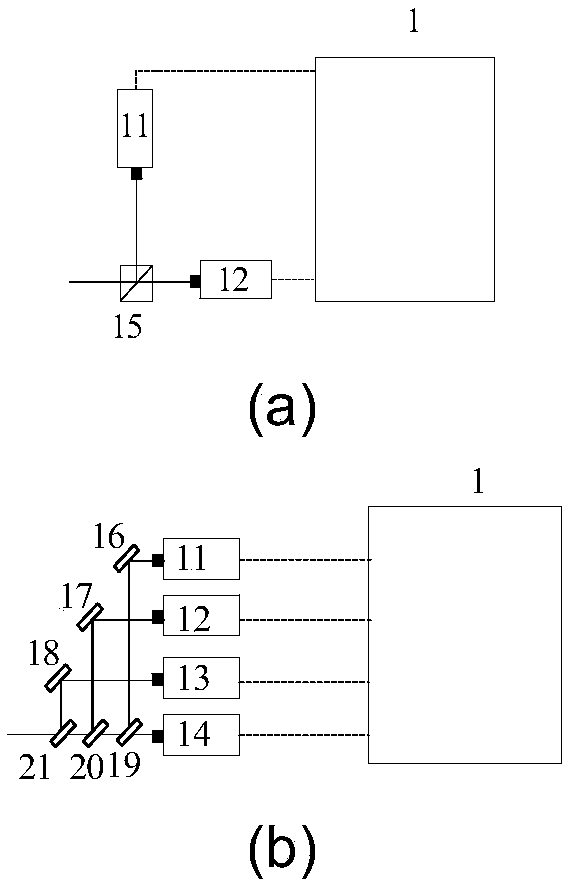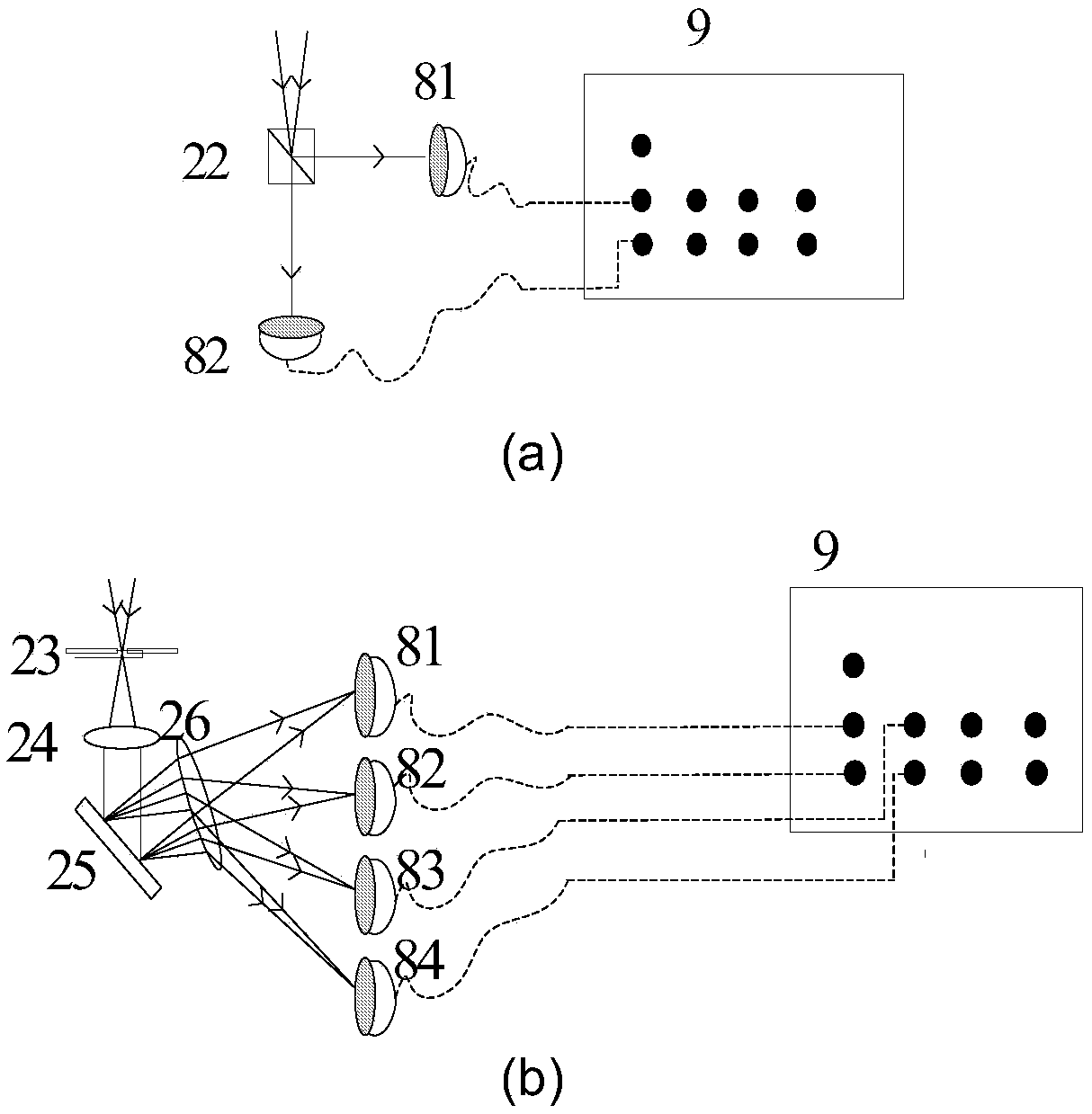A first-photon laser imaging system based on photon labeling
A laser imaging and photon technology, applied in the field of optical imaging, can solve the problems of inability to correctly invert reflectivity information and elevation information, affecting the timeliness of system imaging, and aliasing of time information cycles, so as to improve pertinence and timeliness, Increase power consumption and avoid the effect of circuit design
- Summary
- Abstract
- Description
- Claims
- Application Information
AI Technical Summary
Problems solved by technology
Method used
Image
Examples
Embodiment Construction
[0021] The present invention proposes a first-photon laser imaging system based on photon marking, such as figure 1 It includes a photon encoding system 1, a 1×N laser array 2, an optical path deflection element 3, a two-dimensional scanning device 4, a telescope optical system 5, a beam focusing element 6, a photon decoding system 7, and a 1×N single-photon detector array 8. Multi-channel time-correlated single-photon counting system 9 and control and data acquisition system 10, wherein photon encoding system 1 and 1×N laser array 2 form a single-photon pulse light source that emits marking information; photon decoding system 7 is placed in the beam At the focal plane of the focusing element 6 , before the single photon detector array 8 , the single photons carrying different label information are spatially separated. The control and data acquisition system 10 is developed into a software package to run on the computer, and sends instructions to the photon encoding system 1 t...
PUM
 Login to View More
Login to View More Abstract
Description
Claims
Application Information
 Login to View More
Login to View More - R&D
- Intellectual Property
- Life Sciences
- Materials
- Tech Scout
- Unparalleled Data Quality
- Higher Quality Content
- 60% Fewer Hallucinations
Browse by: Latest US Patents, China's latest patents, Technical Efficacy Thesaurus, Application Domain, Technology Topic, Popular Technical Reports.
© 2025 PatSnap. All rights reserved.Legal|Privacy policy|Modern Slavery Act Transparency Statement|Sitemap|About US| Contact US: help@patsnap.com



